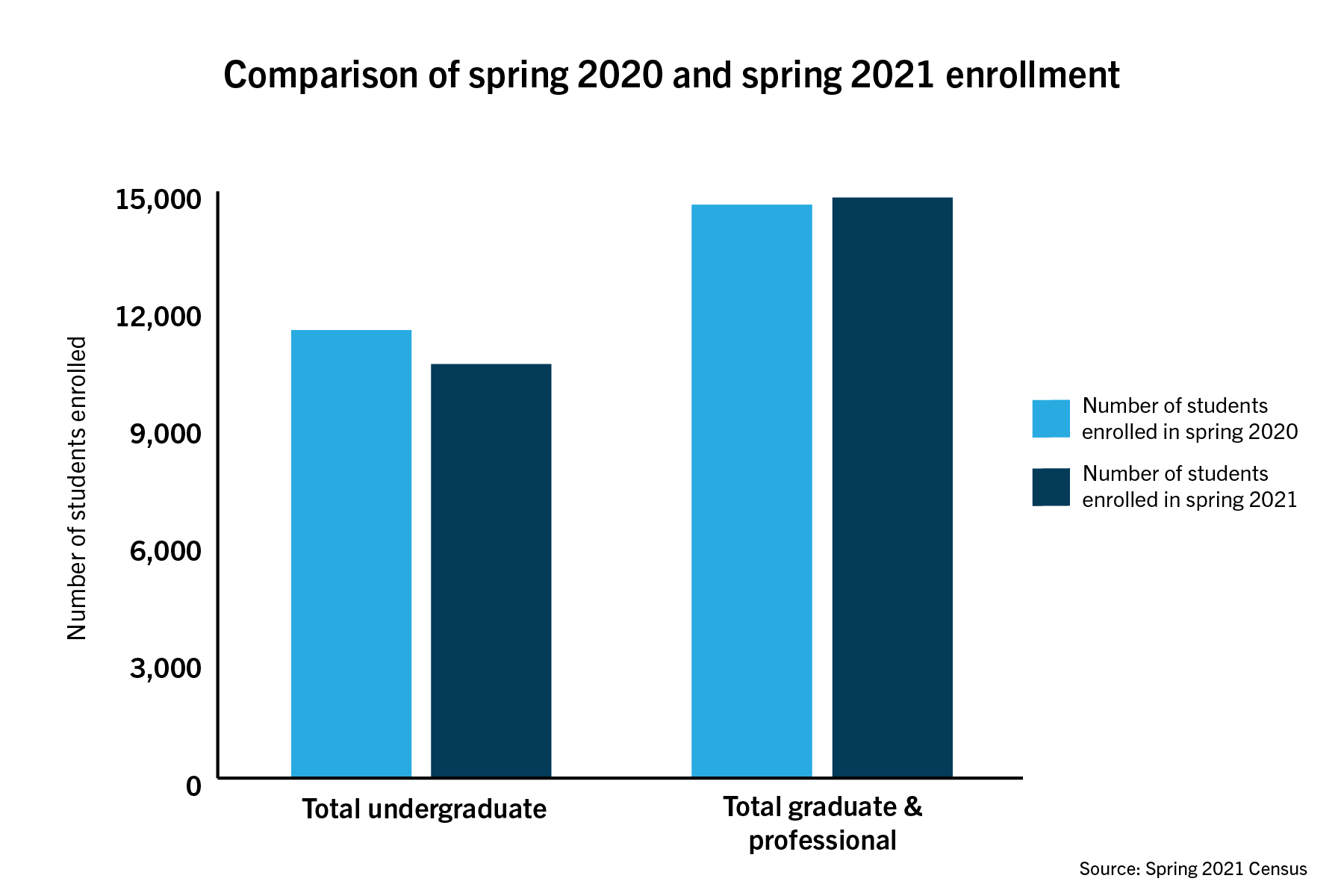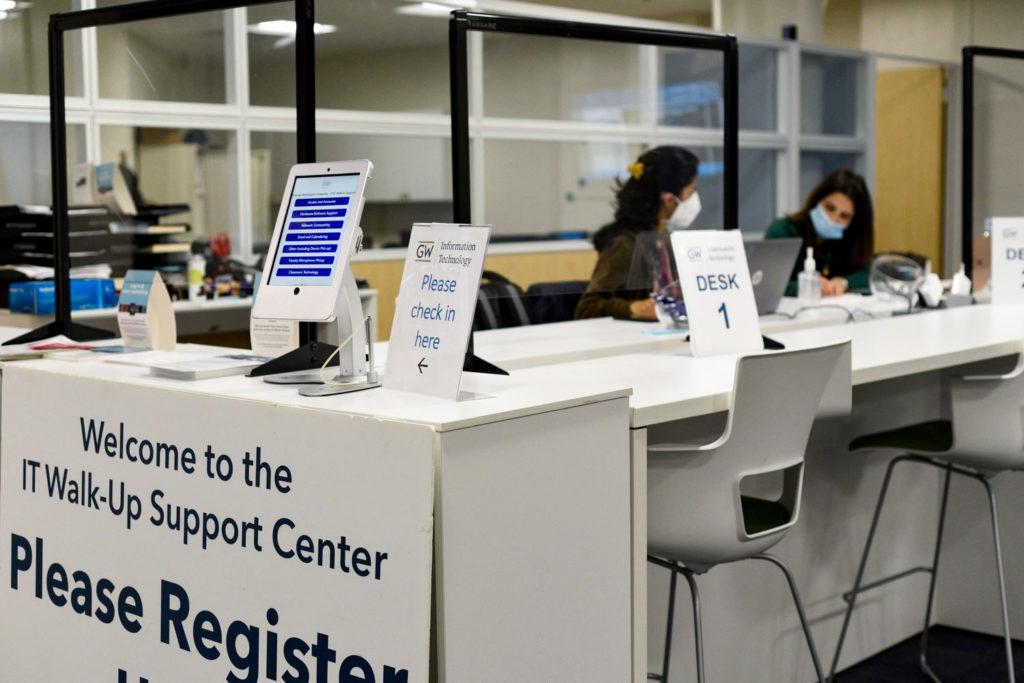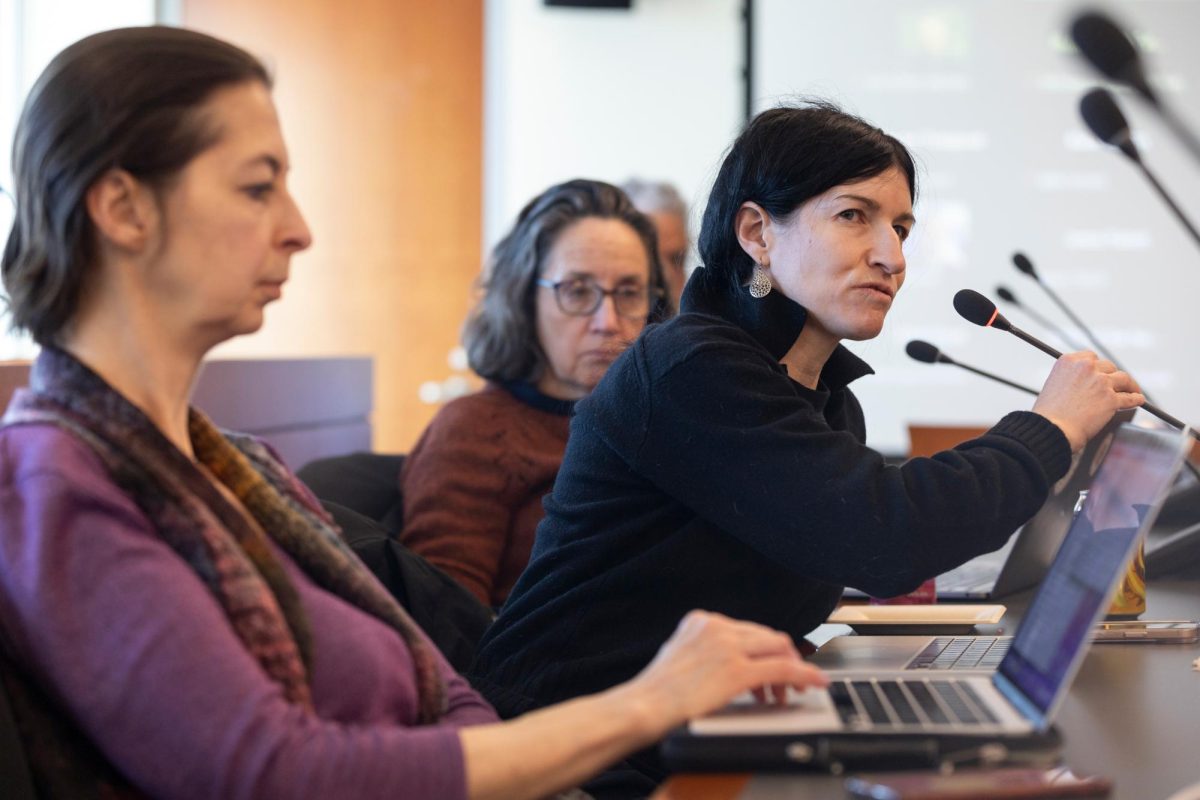GW’s overall enrollment remained relatively stable this semester following a sharp drop in the fall as officials continued remote learning for the academic year.
Jay Goff, the vice provost of enrollment and student success, said the total number of students enrolled at GW fell by 2.7 percent compared to last spring. The metrics are generally on par with enrollment levels in the fall, when officials saw a large drop in the international and undergraduate student populations because of the COVID-19 pandemic, he said.
He said officials are on track to meet GW’s enrollment targets for next fall, including a steady number of transfer applications.
“I feel like we are in the best position possible to achieve the new targets set by the Future Enrollment Planning Task Force,” he said. “If needed, we will use the admissions waitlist to fill any emerging gaps in this year’s class.”

Nicholas Anastacio | Staff Designer
The task force, chaired by Goff and Provost Brian Blake, has spearheaded planning for the composition of GW’s student population. Officials accepted the task force’s recommendations earlier this year to enroll between 2,475 and 2,550 freshmen and between 150 and 300 transfer students this fall.
Goff said the uncertainty in the new student population may lead officials to utilize the waitlist more than in pre-pandemic years. Officials accepted multiple rounds of waitlisted students last year to stabilize enrollment levels once the pandemic hit.
Current deposit rates among regular decision students are comparable to the rates at this point last year, he said.
Goff said the number of undergraduates dropped by 7.7 percent compared to last spring while the number of graduate students rose by 1.2 percent. The latest enrollment data show officials are continuing to see increasing interest in public health, law, nursing, business, education and health sciences.
He added that a “significant” number of the 86 freshmen who started classes in the spring were admitted for fall 2020 but deferred their admission. The number of new students who started at GW this spring jumped by 30 percent compared to last spring, and the number of students registering for summer classes this year also increased, he said.
Goff said officials also saw an increase in the number of graduate applications this spring, receiving 1,127 more applications compared to last year. Each graduate program has examined its capacity and adjusted outreach toward students, he said.
“The communications were designed to promote the idea that there could be additional seats available if the students were willing to apply for the spring semester,” he said. “The graduate enrollment managers did an excellent job of implementing these new communication plans very quickly last fall, and we achieved the results we were hoping for.”
The University enrolled about 800 fewer international students this semester, which Goff attributed to ongoing travel restrictions during the pandemic.
“These were your students that did not have the ability to either get into the country to start at GW, or they were students who were unable to return to GW and were unable to take online courses,” Goff said.
John Dysart – a former University financial aid officer and the president of The Dysart Group, a higher education consulting firm specializing in enrollment management – said universities like GW will have trouble increasing international enrollment for the fall because the pandemic is out of the University’s control.
“For colleges and universities like GW, there is no question that the pandemic has impacted international enrollment severely, and I have not seen any indication that it’s going to be better for this coming fall,” Dysart said.
He said universities across the country are pursuing more aggressive recruitment activities – like digital marketing, text messaging and telephone outreach – to stabilize domestic enrollment. But one of the most powerful recruitment tools is increasing financial aid, he said.
Officials have pushed for increased financial aid in recent months, announcing several major gifts from alumni totaling tens of millions of dollars.
“The economy and unemployment rates have impacted the abilities of many families to pay, and so some individuals are electing not to attend or to attend less expensive or different colleges just because the impact of the bad economy has inhibited their ability to pay,” Dysart said.
Jonathan Williams, the assistant vice president for undergraduate admissions at New York University, said many colleges and universities reported an increase in the number of applicants compared to last academic year.
“The COVID-19 pandemic has created a great deal of uncertainty in the college application process, both for the applicants and for the colleges and universities they seek to attend,” Williams said in an email. “That said, it has been inspiring to see how the cohort of applicants in this current cycle persevered and persisted through all the challenges they have faced.”








